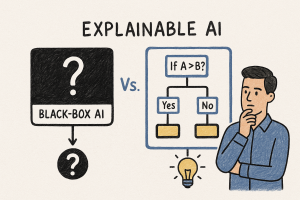How did the idea of developing the digital worker come about?
We realized that enterprise AI solutions were complex, fragmented and difficult to understand. The change in mentality came when we stopped seeing AI as a set of isolated tools and started treating it as a digital worker, with functions, data access and tasks defined within a company. This approach facilitates its adoption and understanding, since anyone understands what a worker does and how they fit into a team and what they need to perform their role: access to information, work structure and the ability to execute tasks autonomously.
Is it a transversal tool or does it require customization?
The digital worker, like a hired person, has general skills that allow you to perform functions in different sectors. However, each company has its own processes and needs a phase of personalization for the digital worker to learn the rules of the business and align with specific workflows.
Who is in charge of customization, the DevOps team or Nuxia?
The team of Nuxia leads the integration and personalization of the digital worker, relying on his experience in IT modernization, DevOps, Cloud, enterprise architecture and security. However, collaboration with the company’s internal teams is key: they can monitor and adjust the system. Nuxia takes care of ongoing support, ensuring that the digital worker evolves with the latest innovations.
In which sectors is it being implemented?
The digital worker is useful in any company with repetitive tasks that can be automated. Lately we have seen more interest in:
• Marketing and Sales: Campaign analysis, customer segmentation and report automation.
• Customer Service: Automated response to queries, claims management and case tracking.
• Finance and Accounting: Report generation, payment reconciliation and anomaly detection.
Other sectors such as legal, real estate, manufacturing/IoT, corporate education and technical support are also exploring its implementation.
How does it integrate with the company’s software?
The digital worker connects with ERP, CRM, databases and APIs, allowing the automation of processes without altering existing tools. The Nuxia team, with work experience at companies such as IBM, Microsoft, HP, Red Hat and VMware, ensures a secure and efficient integration, adapted to each infrastructure.
What LLM is it developed on and what are its characteristics?
The digital worker uses one or more language models (LLM) depending on the task to be performed being able to combine local and external models. Its capabilities include:
Vector DB to store and retrieve information.
Fine-tuning to customize responses according to the company.
Smart orchestration to divide tasks between specialized agents.
Connection with other models and cloud services, with data anonymization to preserve privacy.
Is it the basis for a digital super worker in the future?
Si, clear. Its modular architecture allows for the incorporation of new technologies and constant evolution. Upcoming developments include:
Greater autonomy in decision making.
Advanced collaboration with human teams, adapting in real time to the needs of the business.
Evolution towards physical environments, integrating into hosts with robotic capabilities.
How do you ensure cybersecurity and privacy?
Can operate completely offline, avoiding exposure to the network.
Anonymization and encryption before using cloud models.
Audit and access control to manage information securely.
Complies with international regulations, like GDPR and EU AI regulation.
What is the cost and how does it compare to a human worker?
The digital worker has a base cost of €1,184 per month (without VAT), similar to the minimum wage in Spain. However it is always available and maintains constant performance. Its final cost varies depending on the tasks assigned and the necessary infrastructure, such as the use of GPUs for advanced processing.
Does it require training or is it intuitive?
It’s intuitive, but requires an adaptation phase to adjust to company processes. It is recommended an initial supervision to validate their decisions and a basic AI literacy for the teams that use it. Nuxia offers optional support and training to maximize its effectiveness.
It is the best way to enter and continuously train in the world of AI, since It allows companies to control how it is implemented and use it in their daily operations, ensuring that it evolves at the same pace as the market, but within a secure environment adapted to their specific needs.




